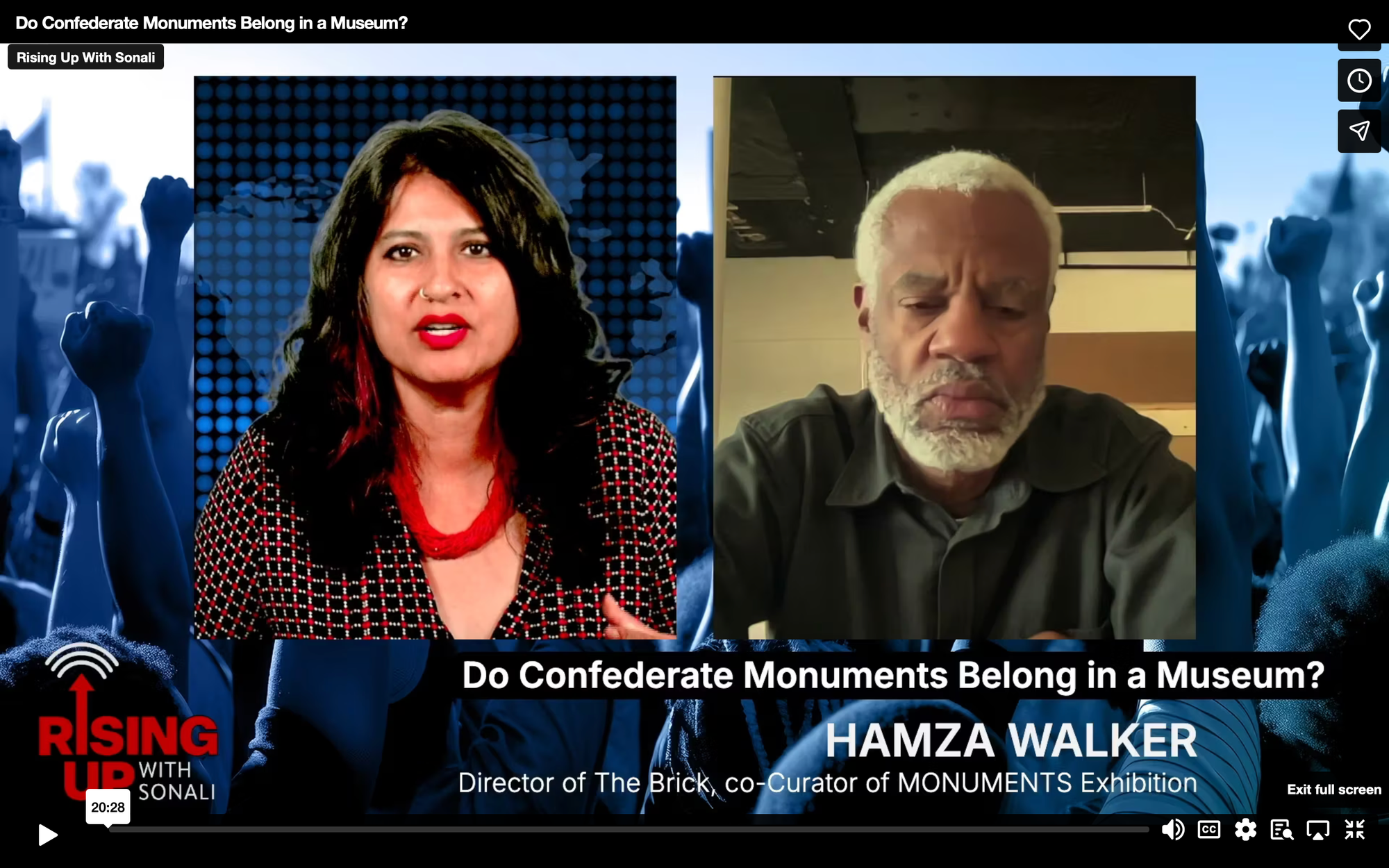FEATURING HAMZA WALKER - A powerful new art exhibit features pieces that are old. So old that many Americans during the 2020 racial justice uprising felt they had no place being revered in public spaces. More than 140 statues and monuments to the Confederacy, and by extension its legacy of white supremacy, slavery, and racism, were toppled between 2015 and 2020. Hundreds more remain standing.
Now, a Los Angeles museum is displaying several of these toppled monuments, some still sporting the graffiti of rage, and one, chopped up and reassembled in a grotesque manner by acclaimed artist Kara Walker.
Hamza Walker is the director of The Brick and co-curator of the MONUMENTS exhibition, now on view at The Brick and at the Geffen Contemporary at MOCA. He spoke with Sonali Kolhatkar about the exhibit and what led to it.
ROUGH TRANSCRIPT:
Sonali Kolhatkar: So, let's talk first about this whole controversy around these Confederate era… no, confederate monuments. I wanna clarify, they weren't created or built in during the actual Confederacy. They were built, I understand many of them, of course, they're varied and there's hundreds all over the country, but many of them came up after the Confederacy as a way to keep alive the legacy. And it took many decades then for there to be this national conversation around why we still have these monuments around the country. Is that relatively accurate?
Hamza Walker: Yes, yes. Yes. They went up I mean, part of the narrative is how did they have a journey, right? In the wake of the Civil War, how did these statues make the journey from the cemetery to public spaces? And how did the men that they celebrate and honor go from being traitors to the union to becoming heroes and paragons of virtue? So that's the kind of story of, or trajectory of these confederate monuments in many cases.
But the lion's share of them were built in the late 19th and the first quarter of the 20th century. So between, you know, you could say 1890, you know, 1880, 1980 to 1925, 1930.

